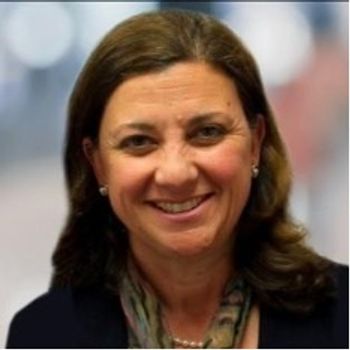
- Medical Economics November 2022
- Volume 99
- Issue 11
What do younger doctors want from their careers?
Because practicing medicine in 2022 looks very different than practicing medicine 40 or even 20 years ago, younger doctors are setting different priorities for their careers than their older peers.
Because practicing medicine in 2022 looks very different than practicing medicine 40 or even 20 years ago, younger doctors are setting different priorities for their careers than their older peers. Millennial physicians are graduating with significantly higher debt — making financial security a priority — and trying to stave off burnout in a health care landscape dominated by payer red tape.
Millennials are also the largest generation in the workforce. According to Glenna Hecht, a human resources consultant and president and founder of Humanistic Consulting, “Seventy-five percent of the workforce will be (Generation) Y and millennials by 2025.”
This generation, and younger Gen X doctors, are placing a greater emphasis on time off and the ever-elusive work-life balance while prioritizing independence over working for hospitals when possible.
The independent physician
Thirty-eight-year-old Colin Zhu, D.O., founder of TheChefDoc, knew early on that he didn’t want to get caught in the “golden handcuffs” of a high-paying job with great benefits that didn’t allow him room to be creative and independent. But he still wanted the security of a good living.
He says that many of the older physicians he knows “sacrificed their own personal lives,” which was not a model he wanted to follow. Zhu considers himself a physician entrepreneur, with a part-time concierge practice. He also contracts for a telehealth company, produces a healthy-living podcast and is building an educational wellness course for children.
“I’ve never enjoyed working in the hospital. It’s very ineffective and inefficient,” Zhu says, explaining that with an emphasis on lifestyle medicine and through concierge care, he can spend more than just a few minutes with each of his patients. “I don’t have the pressure of needing to beat the clock or think about the next patient that’s in the waiting room.”
The way he practices medicine enables him to get off what he calls “the hamster wheel of getting people in and out” for the sake of profits. And he’s not alone in his approach.
“More and more physicians are in this movement of wanting to get out of either clinical medicine 100% of the time or integrating a 50-50 (practice) with nonclinical side gigs (while) still using some form of medicine in their expertise.”
He sees younger physicians doing such work as becoming medical experts, working as expert witnesses for court cases, becoming scientific advisors for startups and entering concierge care.
It’s not an easy path, of course, and one that he only recommends physicians pursue after educating themselves on the financial ramifications of taking an independent path. “There was no road map ahead of me,” Zhu says. “I had to carve out the current moment that I’m standing in, becoming my own map and compass.”
He did so by researching financial and business information that is not taught in medical school to learn how to invest, how to run a business, how to pay taxes and more.
A focus on security
Making a good living is a priority for millennials, as well as incoming Gen Z medical students. One challenge, and it’s no surprise, is that the average medical school graduate in 2021 had more than $200,000 in debt, according to the
Hecht explains that in her work consulting on generational differences in the workforce, “the most important item I hear over and over again from millennials is security and trust. They are completely focused on personal security.”
However, very few medical school graduates will be able to enter private practice. A May 2022 article
Prioritizing downtime
In this ever-changing landscape of health care, younger doctors are prioritizing their time off. Russell Homan, M.D., a 41-year-old pediatrician and the owner of Canopy Pediatrics in Tallahassee, Florida, says that he has always made it a priority to take his vacation time to spend with his wife and three children.
Quickly worn down by the pace of working for a community health center, where he saw five or more patients per hour, Homan decided to make the leap into a subscription-based concierge-style private practice. In starting his own practice, he realized that he could not do it alone and brought on an additional family practice doctor and a nurse. Together the trio do all their own administrative work. What all this means for Homan is that he can take three to four weeks off annually for vacation and is only on call every other weekend.
“Even though I work probably more overall, I have more time with the family. I try to take a lot of time off for myself,” he says. Homan’s patient panel is around 215 kids, and he charges $100 per month per patient subscription. “I’m already getting paid more than I did as a pediatrician. I am working harder for sure, but it’s working hard and playing hard.”
Staving off burnout
Physician burnout continues to be an epidemic in this country. Jerod Richards, M.D., a 44-year-old primary care physician with Village Medical in Plano, Texas, says that younger doctors are more aware of burnout as a problem and sees them striving to mitigate its causes.
“I think some of the older generations of physicians were so used to being an island unto themselves that they didn’t rely on delegating responsibilities,” Richards says. “I have tried to get better at delegating authority — that way, I don’t have to worry about as much.”
He also notes that technology can help alleviate some of the administrative hassles that can lead to burnout, although different generations interact with technology differently. For example, the
Regardless, technology is here to stay, and younger physicians won’t even know a time without it.
Learning from the past
What enables many younger physicians to take a fresh approach to their careers is looking carefully at the past, says Kent Stahl, M.D., an internal medicine physician and chief medical officer for Mindyra Health Corporation in Darien, Connecticut.
“Boomers’ identity was so wrapped up with being a physician (that) they never retired; they just kept going until they fell over,” Stahl says.
He describes older doctors working 15-hour days, taking home case files and considering that perfectly normal. “The work ethic was, you did the job, whatever it took, and you didn’t really complain about it. So Gen X and the millennials saw that and said, ‘No way, not for me.’”
Ultimately, maintaining work/life balance is an active, ongoing process.
“(You) get so caught up in learning medicine and what it takes to see patients and accurately diagnose them ... that sometimes you lose focus on what you want out of life,” Richards says. “If you are happy doing what you do, you can find that work/life balance (so that) you are not burning yourself out.”
Articles in this issue
about 3 years ago
The data dilemmaabout 3 years ago
The training debateabout 3 years ago
Your coding questions answeredabout 3 years ago
Bootcamp Fall 2022: Hot topics in medical professional liabilityabout 3 years ago
Bootcamp Fall 2022: Building a successful RPM programabout 3 years ago
Bootcamp Fall 2022: Debunking the myths of membership medicineabout 3 years ago
Student loan updatesabout 3 years ago
How to renegotiate your building leaseabout 3 years ago
Two advantageous investing vehicles for perennial incomeNewsletter
Stay informed and empowered with Medical Economics enewsletter, delivering expert insights, financial strategies, practice management tips and technology trends — tailored for today’s physicians.








